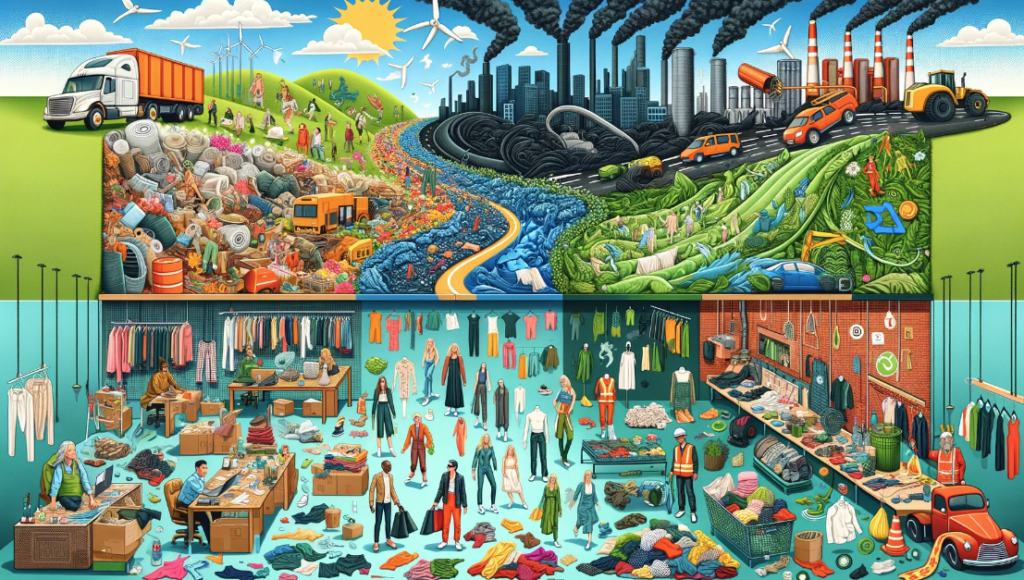Lesson 44.
Sustainable Fashion (持続可能なファッション)

▮ Explanatory Text:
Sustainable fashion is an approach to designing, producing, and consuming clothing that maximizes benefits to the environment and society while minimizing negative impacts. It encompasses a wide range of practices, from using eco-friendly materials and promoting ethical labor conditions to encouraging consumers to buy less and choose well. This movement challenges the traditional fast fashion model, which often involves rapid production cycles, low-quality garments, and unethical labor practices, contributing to environmental degradation and waste. Sustainable fashion aims to create a system that can be supported indefinitely in terms of human impact on the environment and social responsibility. This topic explores the principles of sustainable fashion, including material innovation, waste reduction, recycling and upcycling, and the shift towards a more conscious consumerism.
▮ Common Phrases:
1. Eco-friendly materials include…
2. The slow fashion movement advocates for…
3. Recycling and upcycling reduce waste by…
4. Ethical labor practices in the fashion industry ensure…
5. Conscious consumerism involves…
▮ Example Sentences:
1. Eco-friendly materials include organic cotton, bamboo, and recycled polyester.
2. The slow fashion movement advocates for buying fewer, higher quality items that last longer.
3. Recycling and upcycling reduce waste by transforming old garments into new products.
4. Ethical labor practices in the fashion industry ensure fair wages and safe working conditions for workers.
5. Conscious consumerism involves making informed decisions to support sustainable and ethical fashion brands.
▮ Questions:
1. What are the main environmental and social challenges associated with the traditional fashion industry?
This question encourages learners to discuss the negative impacts of fast fashion on the environment and society.
2. How can consumers contribute to the sustainable fashion movement?
Participants explore ways individuals can support sustainable fashion through their purchasing choices and behaviors.
3. What role do designers and brands play in promoting sustainable fashion, and what challenges do they face?
This prompts a discussion on the responsibilities of fashion designers and brands in adopting sustainable practices and the obstacles they encounter.
4.&5. How does sustainable fashion influence trends and consumer attitudes towards clothing and consumption?
Learners examine the impact of sustainable fashion on changing consumer perceptions and the broader fashion trends.
Discuss the potential of technology and innovation in advancing sustainable fashion practices.
This question invites learners to reflect on how technological advancements can support sustainability in the fashion industry.
▮ Discussion Instructions:
Choose a specific aspect of sustainable fashion that interests you, such as a particular sustainable material, a fashion brand that exemplifies sustainable practices, or the role of legislation in promoting industry change. Discuss the significance of this aspect, including its benefits, challenges, and potential for wider impact. Reflect on how the shift towards sustainable fashion represents a change in the way we think about clothing, consumption, and our relationship with the environment.







